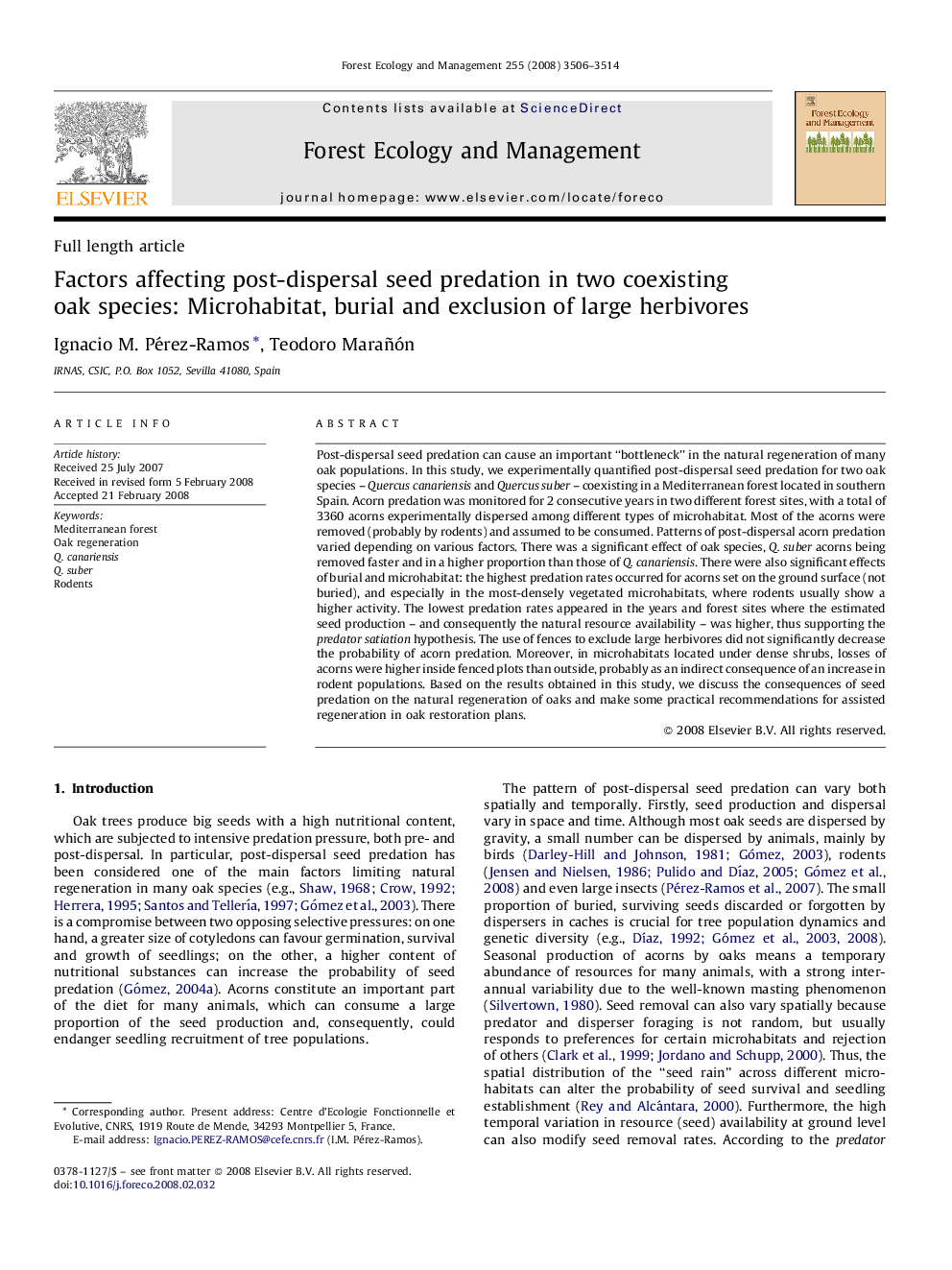| Article ID | Journal | Published Year | Pages | File Type |
|---|---|---|---|---|
| 89230 | Forest Ecology and Management | 2008 | 9 Pages |
Post-dispersal seed predation can cause an important “bottleneck” in the natural regeneration of many oak populations. In this study, we experimentally quantified post-dispersal seed predation for two oak species – Quercus canariensis and Quercus suber – coexisting in a Mediterranean forest located in southern Spain. Acorn predation was monitored for 2 consecutive years in two different forest sites, with a total of 3360 acorns experimentally dispersed among different types of microhabitat. Most of the acorns were removed (probably by rodents) and assumed to be consumed. Patterns of post-dispersal acorn predation varied depending on various factors. There was a significant effect of oak species, Q. suber acorns being removed faster and in a higher proportion than those of Q. canariensis. There were also significant effects of burial and microhabitat: the highest predation rates occurred for acorns set on the ground surface (not buried), and especially in the most-densely vegetated microhabitats, where rodents usually show a higher activity. The lowest predation rates appeared in the years and forest sites where the estimated seed production – and consequently the natural resource availability – was higher, thus supporting the predator satiation hypothesis. The use of fences to exclude large herbivores did not significantly decrease the probability of acorn predation. Moreover, in microhabitats located under dense shrubs, losses of acorns were higher inside fenced plots than outside, probably as an indirect consequence of an increase in rodent populations. Based on the results obtained in this study, we discuss the consequences of seed predation on the natural regeneration of oaks and make some practical recommendations for assisted regeneration in oak restoration plans.
